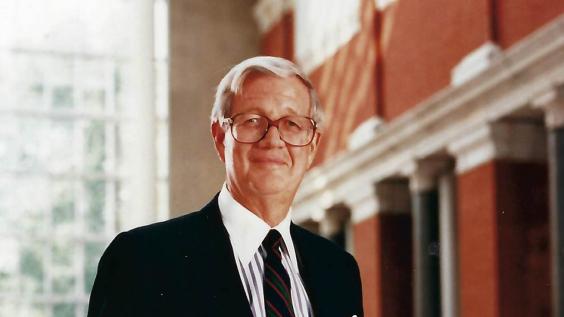By Leah S. Dunaief

Publisher
The worlds of art and politics might seem quite separate, but here is a life that bridges them both. Two lives, in fact.
In one of those chance happenings that amounts to little more than a footnote but turns the tide of history, William Luers became the new ambassador to Czechoslovakia in 1983. It was a time of tumult in the Soviet-bloc country, as the unlikely poet-playwright, Vaclav Havel, was leading a peaceful uprising to oust the Communist state. Havel was in and out of prison and appeared to be a long-shot among other dissidents to triumph against the Soviets. Nonetheless Luers recognized the potential of the cultural leader and contributed to his very survival and political successes that resulted in the independence of Czechoslovakia in 1989 and the subsequent creation of the Czech Republic.
In betting on Havel, Luers was in fact recognizing the pairing of politics and art that informed his own life.
Luers was born in Springfield, Illinois, and attended high school there, where he played basketball with a distinct advantage. He was exceptionally tall. After majoring in chemistry and math and graduating from Hamilton College in upstate New York, he went on to switch to the humanities and study philosophy at Northwestern University, then joined the Navy. It was 1952 and the United States was at war with Korea. After graduating from officers’ candidate school and being discharged in 1957, he entered the Foreign Service and in 1958 earned a master’s degree in Russian Studies from Columbia University. He spoke fluent Russian, Spanish and Italian, and worked at embassies in Moscow, Rome and other capitals in Europe and Latin America. Before he went to Czechoslovakia, he was ambassador to Venezuela.
His most important post was his last. He protected Havel by inviting dozens of American cultural celebrities to visit Prague, and after meeting the playwright, “then at news conferences outside the reach of the government-controlled Czech news media, recast him in a protective armor of global publicity,” according to The New York Times. By burnishing Havel’s name “as a writer but not as a statesman, which might have increased Havel’s perils,” continued The Times’ reporter Luer saved him.
Some of the celebrity visitors included John Updike, Edward Albee, E.L. Doctorow, Kurt Vonnegut, William Styron, Philippe de Montebello, director of New York’s Metropolitan Museum, theater director Joseph Papp, abstract painter Richard Diebenkorn and Katharine Graham, publisher of The Washington Post.
Since Luers came from a culturally prominent family, many of these people were his friends and they understood their purpose in visiting. “The underlying message…was that harming Mr. Havel might risk incalculable international consequences for the Czech government,” according to The Times. In fact, Luers used the arts to promote, protect and ultimately elect Vaclav Havel as leader of the Czech Republic.
After 29 years in the Foreign Service, during which time he became an aide to Secretary of State Henry Kissinger (and in 1974 personally delivered President Nixon’s resignation letter over the Watergate scandal to him), Luers went on to be president of the Metropolitan Museum of Art for 13 years. Like Havel, the arc of his life spanned politics and art.
William Luers died this past Saturday, May 10, in his home in Washington Depot, Connecticut, at the age of 95. His greatest satisfaction was the success of Vaclav Havel, according to The Times. “The Communist system was deeply flawed. It underestimated cultural leaders’ influence on the people.”





